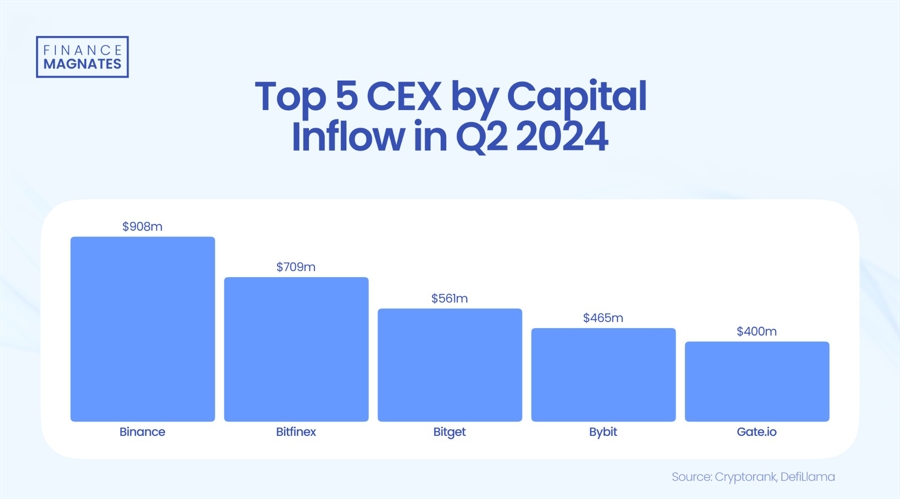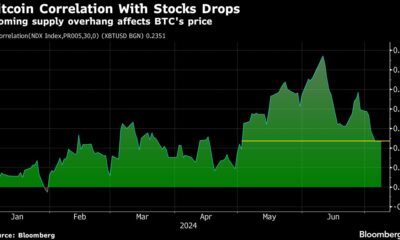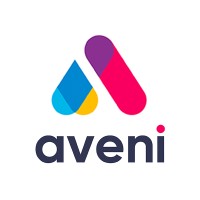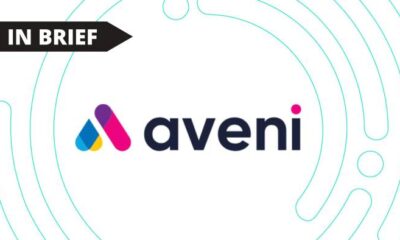News
Cryptocurrencies and Banking: Tokenization of the global financial system is yet to come

Disclosure: The views and opinions expressed herein are solely those of the author and do not represent the views and opinions of the crypto.news editorial.
This is part two of a three-part interview series with William Quigleya cryptocurrency and blockchain investor and co-founder of WAX and Tether, led by SelvaOzelli exclusively for crypto.news. The first part is about Prison sentences of Sam Bankman-Fried and Changpeng Zhao. The second part is about cryptocurrency and banking. The third part is about the future of NFTs.
1) In the first part of our interview, you said that you started your career at Andersen as a bank auditor. Coincub recently released a cryptocurrency report ranking the most crypto-friendly banks in the world. What do you think about tokenization of the banking system?
I could write a book on this topic, but I will summarize my thoughts briefly.
Money and payments have evolved as long as they have existed. The methods society uses to store and transfer value have changed in my lifetime, first through digitization and now through tokenization. Each major update to the global monetary architecture has introduced both new benefits and new risks over the past few decades. With digitalization, the vast majority of what people generally think of as “money” is, in fact, account balances deposited in databases maintained by commercial banks. As a general rule, banks primarily, but not exclusively, use relational databases that run on Unix and similar operating systems, first developed in the 1960s.
The tokenization of the global financial system is still in its early stages. However, it could have a transformative impact on how ownership of commercial bank deposits, payments, government and corporate bonds, money market fund shares, gold and other commodities, real estate, and other assets and liabilities are recorded on blockchain and other distributed ledgers. , enabling far-reaching new features.
As detailed in Coincub Cryptocurrency Report, several financial institutions around the world have been actively exploring the possibility of tokenizing assets to improve how we transfer value by using blockchain technology to facilitate fast, secure, and low-cost international payment processing services (and other transactions) through Distributed services use encrypted ledgers that provide reliable real-time verification of transactions without the need for intermediaries such as correspondent banks and clearing houses. Despite recent advances in digitalization, our banking payment and settlement systems remain slow and inefficient for many users, with delayed settlements for large classes of transactions and numerous intermediaries, each adding layers and layers of costs.
Tokenization and distributed ledgers have the potential to overcome many of these obstacles by operating globally around the clock and introducing real-time settlement finality. Since tokenization offers:
- Programmability– which could make it easier for the bank and its customers to automatically remove funds, respond to liquidity strains immediately and automatically, and move liquidity when and where it is needed.
- Immediate balance– which could provide the ability to transfer future value transfers onto the ledger that will automatically self-execute based on the occurrence of future conditions, thus increasing the speed and intensity of banking regulations.
- Atomic settlement—which can reduce the risk of loss in the time between payment and delivery or the simultaneous exchange and settlement of payment and delivery, even between multiple parties.
- Immutability of the shared registry– which can serve as a transaction log and reliable audit trail. Blockchain-based IT infrastructure can significantly reduce payment errors and shorten account reconciliation times. The transparency and immutability of the ledger can help regulators and law enforcement obtain accurate and verifiable data on token transactions and seize assets from criminals.
While tokenization of the global financial system will face challenges and risks as financial institutions, developers, regulators and other stakeholders continue to develop the technology, we already see examples of how tokenization is starting to provide tangible benefits in the global banking sector. For example, in China, the digital yuan, launched in 2020, could put China ahead of Europe and the United States in the global race to develop a state-backed digital currency, also known as central bank digital currency (CBDC), used throughout their banking system. According to data, digital yaun has been mainly used for domestic retail and public sector payments amounting to 100 billion yuan ($14.5 billion) so far. released from the People’s Bank of China.
2) What challenges and risks will tokenization introduce to the banking sector? THE fall of the FTX cryptocurrency exchange, which we talked about during the first part of our interview, was a watershed moment whose ripple effects included a market crash, a cryptocurrency crisis in 2023 with five bank failures, regulatory reactions and further failures. On April 26, US regulators Closed Philadelphia-based Republic First Bank marks the nation’s first bank failure in 2024 due to “material weaknesses in internal control over financial reporting.” However, this could just be the start of more bank failures, consultancy Klaros Group claims analyzed approximately 4,000 U.S. banks and identified 282 smaller banks that face potential losses related to higher interest rates.
From a technological and operational perspective, many open questions remain regarding the tokenization of the global banking system. If tokenization will play a central role in our future financial system, with small banks taken over by larger banks when they fail, many questions remain unanswered:
- Will there be just a small handful of unified, interoperable banking ledgers on which all globally tokenized transactions occur?
- Or will many banks keep their own blockchains?
- To what extent will these banking blockchain platforms be interoperable so that customers using different blockchains can transact globally and seamlessly with each other in a safe and secure manner?
- How will cybersecurity and other financial risks be managed among banks? For example, when The Silicon Valley bank failed last year, stablecoin USDC broke the peg to the dollar after Circle, the US company behind the coin, revealed that $3.3 billion of the $40 billion in USDC reserves backing it were held at Silicon Valley Bank. In contrast, at Tether (USDT)—the world’s first and most traded stablecoin, which I co-founded—reserve deposits transparently disclosed to the public on a daily basis were better managed against the risk of bank failures.
Then, there is the legal, regulatory and tax perspective, with countries introducing different legal, regulatory and tax regimes governing digital assets and blockchains. Further work is needed to clarify the extent to which ownership and other rights associated with a given asset link and move across borders with a token.
Ultimately, these and many other critical questions will be answered, one way or another, as financial institutions, developers, regulators, and other stakeholders continue to develop blockchain technology around the world. Meanwhile, with the leadership of the Financial Action Task Force (FAFT) and the Organization for Economic Co-operation and Development (OECD), some global standards in money laundering and tax laws are being established.
3) In the first part of our interview, you indicated that you co-founded the first fiat-backed stablecoin Tether, the most traded digital asset in the world, taking the lead in the industry with strong competition from Meta, BRICS countries and other. Tell us about the Tether stablecoin.
Tether is a fiat-backed stablecoin launched by Tether Limited Inc. in 2014. Tether Limited is owned by British Virgin Islands-based iFinex Inc., which also owns Bitfinex, a Hong Kong-based cryptocurrency exchange offering investing in digital assets and trading with users outside the United States.
As of May 2024, Tether has been minted across 14 protocols and blockchains. Tether stablecoins avoid the extreme volatility of digital assets, most commonly by tying their value to the price of a traditional currency/fiat currency such as the US dollar, euro, or Chinese yuan. Meta attempted to issue a stablecoin called Libra, later renamed Diem, which was shut down in 2022. BRICS countries have been eager to issue a stablecoin based on a basket of fiat currencies since 2017. Tether launched #BRICST last year at BRIC summit, a BRICS stablecoin alternative to the USD and USDT, pegged to the Chinese yuan, offering 10% annual returns to meet this demand.
Tether is the largest cryptocurrency in terms of trading volume, with 64% of the market share among stablecoins. After overtaking Bitcoin in 2019, USDT has become the most traded digital asset in the world. As of May 4, 2024, Tether had over $110 billion, 36 million euros, 20 million yen, 19 million Mexican dollars, and 246,000 AUDT in circulation, raising concerns that it could pose a systemic risk to digital asset markets and threaten the stability of broader markets. financial markets.
Tether is generally considered safe for investment, primarily as a means to hedge against the volatility of other digital assets. However, like any investment, it carries risks, and it is essential that investors consider Tether’s efforts to maintain a fully transparent company, publishing a log of current reserve activity on a daily basis, and strengthening regulatory compliance in collaboration with international regulators.
4) As the most traded digital asset, Tether is inevitably used in illicit transactions. According to TRM Labs, USDT was connected to $19.3 billion in illicit transactions in 2023 and was the most used stablecoin for criminal activity in the cryptocurrency industry last year. Do you have any comments on the illicit use of Tether?
As of December 1, 2023, Tether is working with law enforcement and regulatory agencies by introducing a voluntary wallet freeze policy. Bind offers secondary market controls to freeze transactions associated with individuals listed on the US Office of Foreign Assets Control (OFAC) Specially Designated Nationals List (SDN). This list includes companies and individuals controlled or owned by sanctioned countries.
Recently also Tether announced its partnership with blockchain surveillance firm Chainalysis to monitor transactions with its tokens on secondary markets. The monitoring system will help Tether identify risky crypto wallets/addresses that could be used to circumvent sanctions or engage in illicit activities such as terrorist financing and illicit transfers.
News
Block Investors Need More to Assess Crypto Unit’s Earnings Potential, Analysts Say — TradingView News

Block, a payments technology company led by Jack Dorsey square could become a formidable player in the cryptocurrency mining industry, but Wall Street will need details on profit margins to gauge the positive impact of the business on earnings, analysts said.
Block signed its first large-scale cryptocurrency mining hardware pact on Wednesday, agreeing to supply its chips to bitcoin miner Core Scientific CORZbut no financial details were disclosed.
JP Morgan estimates the deal could net Block between $225 million and $300 million, but said more information will be needed to assess the hardware business’s long-term earnings potential.
“We still have a lot to learn in terms of the margins of this business, so we are hesitant to underwrite this transaction until we know more about the cadence and economics,” J.P. Morgan said.
The deal marks a major step for the payments company, which started out as “Square” in 2009 before rebranding in 2021 in a nod to its focus on crypto and blockchain technologies.
Dorsey, who co-founded and ran Twitter (now known as “X”), has long been bullish on Bitcoin. Block began investing 10% of its monthly gross profit from Bitcoin products into Bitcoin in April.
In the first quarter, nearly 9% of the company’s cash, cash equivalents, and marketable securities consisted of bitcoin.
“This development (the deal with Core Scientific) is further evidence of Block’s role as an emerging leader in the crypto hardware ecosystem,” Macquarie analysts Paul Golding and Emma Liang wrote in a note.
Analysts say similar deals to follow could further validate Block’s reputation in the industry.
But J.P. Morgan said the stock’s performance will be determined by Block’s other segments, such as Square and Cash App.
Block shares have lost nearly 17% this year.
News
This Thursday’s US Consumer Price Index could be a game-changer for cryptocurrencies!

3:30 PM ▪ 4 minute read ▪ by Luc Jose A.
This Thursday, attention will be focused on the United States with the anticipated release of the Consumer Price Index (CPI). This economic indicator could trigger significant movements in the markets, especially for the U.S. dollar and cryptocurrencies. While investors remain vigilant, speculation is rife about the potential impact of these key figures.
The Consumer Price Index: The Cornerstone of the American Economy
The Consumer Price Index (CPI) is a key measure of inflation which reflects changes in the price of goods and services purchased by American households. This index is calculated monthly by the Bureau of Labor Statistics (BLS) and serves as a barometer for the cost of living. The consumer price index covers a wide range of products, including food, clothing, housing, health care, and entertainment. Economists and policy makers closely monitor this data to anticipate economic trends and adjust monetary policies accordingly.
The June CPI data is due to be released this Thursday at 2:30 p.m., and is highly anticipated by investors. The current consensus is for headline annual inflation to decline to 3.1%, from 3.3% the previous month, while core inflation is expected to remain stable at 3.4%.
THE BIGGEST EVENT THIS WEEK 🚨
The U.S. Consumer Price Index is expected to
PUBLICATION TODAY AT 8:30 AM ET.EXPECTATIONS ARE 3.1% WHILE
LAST MONTH THE CONSUMER PRICE INDEX (CPI) WAS 3.3%HERE ARE SOME SCENARIOS 👇
1) CPI above 3.1%
THIS WILL BE A DAMAGE TO THE MARKET
GIVEN THAT THE LAST TIME THE CPI DATA… photo.twitter.com/yudjPLPl8g— Ash Crypto (@Ashcryptoreal) July 11, 2024
Consumer Price Index Release: What Does It Mean for the Dollar and Bitcoin?
Inflation as measured by the consumer price index is a key determinant of the value of the US dollar. If the consumer price index declines more than expected, it could reinforce expectations of a rate cut by the Federal Reserve in September, thus weakening the dollar. A weaker dollar could benefit GBP/USD, which recently broke a major resistance level, and Bitcoin, which could see its price rise due to increased demand from institutional investors.
Current forecasts suggest that headline inflation will decline to 3.1%, with core inflation holding steady at 3.4%. However, a surprise increase in the consumer price index could upset these expectations. Fed Governor Lisa Cook has mentioned the possibility of a soft landing for the economy, with inflation falling without a significant increase in unemployment, which could lead the Fed to consider rate cuts. This outlook is particularly favorable for stock markets and cryptocurrencies, including Bitcoin, which could benefit from a more accommodative monetary policy.
According to experts at 10x Research, especially their CEO Markus Thielen, Bitcoin could see a significant increase if the CPI data confirms a decline in inflation. Thielen indicated that Bitcoin could reach almost $60,000, a prediction that has already been reflected with a rise to $59,350 before the data was released.
Therefore, Thursday’s CPI data could determine the future direction of financial and cryptocurrency markets. High inflation could strengthen the US Dollarwhile a drop in inflation could pave the way for rate cuts by the Fed, thus giving a boost to Bitcoin and other digital assets.
Enhance your Cointribune experience with our Read to Earn program! Earn points for every article you read and access exclusive rewards. Sign up now and start earning rewards.
Click here to join “Read to Earn” and turn your passion for cryptocurrencies into rewards!
Luke Jose A.
A graduate of Sciences Po Toulouse and holder of a blockchain consultant certification issued by Alyra, I joined the Cointribune adventure in 2019. Convinced of the potential of blockchain to transform many sectors of the economy, I am committed to raising awareness and informing the general public about this ever-evolving ecosystem. My goal is to enable everyone to better understand blockchain and seize the opportunities it offers. Every day, I strive to provide an objective analysis of the news, decipher market trends, convey the latest technological innovations and put into perspective the economic and social issues of this ongoing revolution.
DISCLAIMER
The views, thoughts and opinions expressed in this article are solely those of the author and should not be construed as investment advice. Do your own research before making any investment decisions.
News
Crowd Expects Bitcoin Bounce Suggests Further Losses, As RCO Finance Resists Crash

Bitcoin is seeing a rebound after its recent price crash to $53,000. Other altcoins are subsequently recovering, with many cryptocurrency investors increasingly making new entries. However, Santiment warned against this hopium, suggesting that Bitcoin could extend its price losses.
As the broader market anticipates Bitcoin’s next price action, RCO Finance (RCOF) demonstrates resilience, attracting thousands of people in influxes. Read on for more details!
RCO Finance challenges the market crisis
RCO Finance (RCOF) is approaching $1 million in funding raised, amid growing interest from institutional traders seeking stability from Bitcoin’s wild price swings. While much of the broader market has seen significant price losses, RCO Finance has remained resilient, experiencing a surge in its pre-sale orders.
As a result, the project seems oblivious to the current market conditions, leading top market experts to take a deep dive into its ecosystem. They identified why RCO Finance was able to withstand the bearish pressure and its potential to hold up even stronger during the impending broader market crash.
The main reason was related to the innovative use of RCO Finance AI Trading Tools as a Robo Advisor. This tool has been integrated into RCO Finance’s cryptocurrency trading platform, offering full automation and highly accurate market forecasts to help investors make informed decisions.
Read on to learn more about this tool and other exciting features of RCO Finance!
Bitcoin Bounces Amid Impending Crash
Bitcoin is bouncing back, rallying 8% after plunging to its lowest point since February on July 5. While this rebound has triggered a bullish wave in the broader market, many cryptocurrency analysts predict it could be short-lived as Bitcoin is poised for an imminent crash toward the $50,000 zone.
On a Post X (formerly Twitter)Santiment revealed that while the crowd is anticipating a Bitcoin rally, this potential crash could trigger FUD and panic, causing average traders to wither and give up on Bitcoin. The platform noted that Bitcoin rally has historically occurred after these weak hands sold their holdings.
In particular, these cryptocurrency analysts speculate that the previous and upcoming Bitcoin crash is largely the result of bearish market psychology, as opposed to large BTC sell-offs by the German government and Mt. Gox. In particular, Ki Young Ju, founder and CEO of CryptoQuant, noticed that “the sales were rather negligible, given the overall liquidity of Bitcoin.”
Enjoy seamless investing on RCO Finance
RCO Finance is making investing easier and easier, democratizing access to high-level tools and cryptocurrency earnings that were once reserved for professional and institutional investors. It has also prioritized accessibility, allowing investors of all levels to easily navigate its features through its intuitive interface.
Additionally, they can also maintain anonymity and privacy as the platform has no KYC requirements. To build trust, the platform has instead emphasized regular smart contract audits by respected security firm SolidProof.
Performance data shows massive adoption, indicating that it is doing its job effectively. Investors can also capitalize on RCO Finance’s fast transaction speeds and incredibly low transaction fees, with leverage options up to 1000x to further optimize their portfolios and maximize returns.
Leverage RCO Finance’s pre-sale earnings
An in-depth analysis of the RCO Finance ecosystem revealed that it has strong potential to rival and surpass major cryptocurrencies in the cryptocurrency industry. With a very limited total token supply and excellent tokenomics, RCO Finance is poised to reach its target of $1 billion in market cap upon its official launch.
RCO Finance has adopted a deflationary model, strategic burn mechanisms, and a vesting schedule. However, the project encourages long-term holding by focusing on sustained growth through incredibly high staking rewards.
RCOF tokens are currently available at an altcoin price of $0.01275 in progress Pre-sale Phase 1. This is likely the lowest price these coins will ever trade at, as they are expected to increase exponentially with each new presale phase.
With RCOF expected to be $0.4 at launch, investors jumping in now can expect a Return 30x on their investment!
For more information on RCO Finance (RCOF) presale:
Join the RCO Financial Community
Disclaimer: The statements, views and opinions expressed in this article are solely those of the content provider and do not necessarily represent those of Crypto Reporter. Crypto Reporter is not responsible for the reliability, quality and accuracy of any material in this article. This article is provided for educational purposes only. Crypto Reporter is not responsible or liable, directly or indirectly, for any damage or loss caused or alleged to be caused by or in connection with the use of or reliance on any content, goods or services mentioned in this article. Do your own research and invest at your own risk.
News
Bitget Ranks Third Among Cryptocurrency Exchanges by Capital Inflows in Q2

Although Bitget is not the largest cryptocurrency exchange in terms of total volumes, it closed a favorable quarter. From April to June, the platform ranked third in net capital inflows and showed the strongest growth in market share compared to its competitors.
In the second quarter, investors moved $700 million into Bitget, and activity on the platform increased by nearly 50%.
The exchange has seen a surge in user funds, with Bitcoin (BTC), Tether (USDT), and Ethereum (ETH) rising 73%, 80%, and 153%, respectively, in the first six months of the year. This growth coincided with adding 2.9 million new users to the platform.
This has positioned Bitget among the top exchanges with the highest positive net inflows in the last quarter. Only Binance, which remains the market leader, and Bitfinex have performed better in this category.
According to CCData’s latest H2 Outlook Report, the exchange also recorded the highest market share growth among centralized exchanges, increasing 38.4% from H2 2023 to H1 2024.
Bitget’s spot trading volume has also seen a visible increase, going from $28 billion in Q1 to $32 billion in Q2, marking an increase of over 10%. The platform’s monthly visitors have reached 10 million. Although its volumes are increasing, Bitget still does not rank among the top 10 cryptocurrency exchanges in terms of spot trading.
The changes taking place in the centralized cryptocurrency exchange market show that competition is becoming more and more intenseAn example of this is the recent surge in popularity of Bybit, which has become the second largest exchange in terms of spot trading volumes.
Sports Sponsorships and New Products
Gracy Chen, Source: LinkedIn
Gracy Chen, CEO of Bitget, commented on the quarterly performance, saying, “Q2 2024 was a pivotal period for Bitget. Our collaboration with Turkish athletes, along with significant growth in users and website traffic, is part of our global expansion.”
In an effort to expand its global presence, Bitget has partnered with three Turkish national athletes as part of its #MakeItCount campaign, starring Lionel Messi. The deal with the famous footballer It was signed in Februaryto build brand presence in Latin America.
The exchange also launched a $20 million TON Ecosystem Fund in partnership with Foresight Ventures to support early-stage projects on The Open Network.
The exchange introduced two new initial token listing products, PoolX and Pre-market, which collectively launched over 100 projects. Additionally, Bitget’s native token, BGB, was recognized as the best-performing centralized exchange token in June and was ranked among the top 10 cryptocurrencies by Forbes.
In its latest move, the cryptocurrency exchange aimed to become a regulated player in IndiaThe announcement comes as the world’s most populous democracy grapples with the complexities of integrating cryptocurrencies into its financial ecosystem.
Even recently,
Bitget Wallet Announced a joint investment with cryptocurrency investment firm Foresight X in Tomarket, a decentralized trading platform. This initiative targets emerging asset classes and aims to expand the portfolio’s services beyond traditional decentralized exchanges (DEXs).
Although Bitget is not the largest cryptocurrency exchange in terms of total volumes, it closed a favorable quarter. From April to June, the platform ranked third in net capital inflows and showed the strongest growth in market share compared to its competitors.
In the second quarter, investors moved $700 million into Bitget, and activity on the platform increased by nearly 50%.
The exchange has seen a surge in user funds, with Bitcoin (BTC), Tether (USDT), and Ethereum (ETH) rising 73%, 80%, and 153%, respectively, in the first six months of the year. This growth coincided with adding 2.9 million new users to the platform.
This has positioned Bitget among the top exchanges with the highest positive net inflows in the last quarter. Only Binance, which remains the market leader, and Bitfinex have performed better in this category.
According to CCData’s latest H2 Outlook Report, the exchange also recorded the highest market share growth among centralized exchanges, increasing 38.4% from H2 2023 to H1 2024.
Bitget’s spot trading volume has also seen a visible increase, going from $28 billion in Q1 to $32 billion in Q2, marking an increase of over 10%. The platform’s monthly visitors have reached 10 million. Although its volumes are increasing, Bitget still does not rank among the top 10 cryptocurrency exchanges in terms of spot trading.
The changes taking place in the centralized cryptocurrency exchange market show that competition is becoming increasingly intenseAn example of this is the recent surge in popularity of Bybit, which has become the second largest exchange in terms of spot trading volumes.
Sports Sponsorships and New Products
Gracy Chen, Source: LinkedIn
Gracy Chen, CEO of Bitget, commented on the quarterly performance, saying, “Q2 2024 was a pivotal period for Bitget. Our collaboration with Turkish athletes, along with significant growth in users and website traffic, is part of our global expansion.”
In an effort to expand its global presence, Bitget has partnered with three Turkish national athletes as part of its #MakeItCount campaign, starring Lionel Messi. The deal with the famous footballer It was signed in Februaryto build brand presence in Latin America.
The exchange also launched a $20 million TON Ecosystem Fund in partnership with Foresight Ventures to support early-stage projects on The Open Network.
The exchange introduced two new initial token listing products, PoolX and Pre-market, which collectively launched over 100 projects. Additionally, Bitget’s native token, BGB, was recognized as the best-performing centralized exchange token in June and was ranked among the top 10 cryptocurrencies by Forbes.
In its latest move, the cryptocurrency exchange aimed to become a regulated player in IndiaThe announcement comes as the world’s most populous democracy grapples with the complexities of integrating cryptocurrencies into its financial ecosystem.
Even recently,
Bitget Wallet Announced a joint investment with cryptocurrency investment firm Foresight X in Tomarket, a decentralized trading platform. This initiative targets emerging asset classes and aims to expand the portfolio’s services beyond traditional decentralized exchanges (DEXs).
-

 DeFi12 months ago
DeFi12 months agoDeFi Technologies Appoints Andrew Forson to Board of Directors
-

 Fintech12 months ago
Fintech12 months agoUS Agencies Request Information on Bank-Fintech Dealings
-

 News1 year ago
News1 year agoBlock Investors Need More to Assess Crypto Unit’s Earnings Potential, Analysts Say — TradingView News
-

 DeFi12 months ago
DeFi12 months agoSwitchboard Revolutionizes DeFi with New Oracle Aggregator
-

 DeFi12 months ago
DeFi12 months agoIs Zypto Wallet a Reliable Choice for DeFi Users?
-

 News1 year ago
News1 year agoBitcoin and Technology Correlation Collapses Due to Excess Supply
-

 Fintech12 months ago
Fintech12 months agoWhat changes in financial regulation have impacted the development of financial technology?
-

 Fintech12 months ago
Fintech12 months agoScottish financial technology firm Aveni secures £11m to expand AI offering
-

 Fintech12 months ago
Fintech12 months agoScottish financial technology firm Aveni raises £11m to develop custom AI model for financial services
-

 News1 year ago
News1 year agoValueZone launches new tools to maximize earnings during the ongoing crypto summer
-

 Videos6 months ago
Videos6 months ago“Artificial intelligence is bringing us to a future that we may not survive” – Sco to Whitney Webb’s Waorting!
-

 DeFi1 year ago
DeFi1 year agoTON Network Surpasses $200M TVL, Boosted by Open League and DeFi Growth ⋆ ZyCrypto






